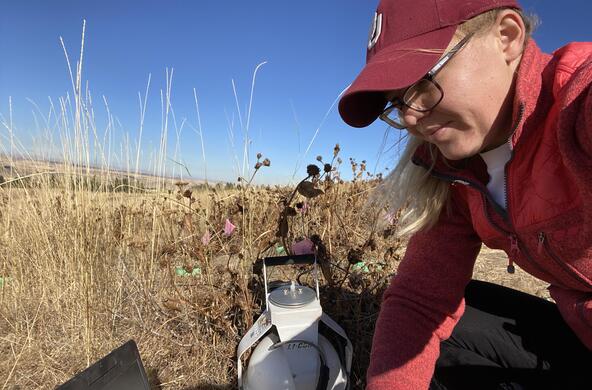The Dutchess County Environmental Management Council recently completed a State of the Environment report for Dutchess County. This is the fifth in a series of articles from the report. The entire report can be found online.
Dutchess County residents may notice that trees are budding earlier in the spring, summer heat waves are more common, with very dry conditions — and when it rains, it pours. These observed changes in the Hudson Valley are part of the larger global trend of change in the Earth's climate.
So how do we know that our climate is changing? For starters, it helps to know what the climate of our region has been like in the past.
Climate refers to the long-term weather patterns of an area, including temperature, precipitation, humidity, atmospheric pressure and wind, while weather refers to the present condition of these elements over shorter periods. Dutchess County has a humid continental climate. The average temperature normally exceeds 90 degrees between 5-15 times during the summer, and falls below zero degrees between 5-10 times during the winter.
During the growing season (May to September), total precipitation averages between 18-22 inches, which supports a wide variety of vegetation. However, the county usually experiences one or more periods of short-term droughts during summers. Snowfall in the county is about 30-50 inches per year.
Flooding occurs frequently in Dutchess County with roughly three floods each year. Every major stream in Dutchess County has flood-prone areas. Floods most often occur between December and April, when the ground is frozen and soils are saturated.
Long-term weather data from thousands of stations around the world show that the Earth's surface Fahrenheit temperature has increased by more than 1.4 degrees Fahrenheit in the last 100 years. In New York, summer temperatures are 2 degrees warmer than in 1970, while winter temperatures are 4 F warmer. In Dutchess County, there has been an increase in the number of hot summer days and a decrease in the number of cold winter days. Further evidence of warming in Dutchess County can be seen in an increased growing season by over 20 days over the past 60 years. In addition, we have seen an increase in annual precipitation and a decrease in the number of days with 1 inch of snow on the ground.
In the future, New York's average annual temperature will increase by 1.5-3 F by 2020 and 3-5.5 F by 2050, depending on the greenhouse gas emissions to the atmosphere. We can expect an increase in average annual precipitation of up to 5 percent by 2020 and 10 percent by 2050. There will be an increase in precipitation in the winter and decreased precipitation in late summer or fall. Winter storms will produce sleet, freezing rain and rain with less snowfall.
Our region's changing climate will continue to have widespread effects on our natural resources, agriculture, infrastructure and human health. Local and regional planners, municipal groups and stakeholders such as farmers should integrate climate change information into their planning to reduce risks, take advantage of opportunities and adapt to the changing climate.
Allison Chatrchyan is the environment and energy program leader at Cornell Cooperative Extension Dutchess County and a member of the Dutchess County Environment Management Council. Vicky Kelly is a member of the Dutchess County Environmental Management Council and a program manager at the Cary Institute of Ecosystem Studies.





